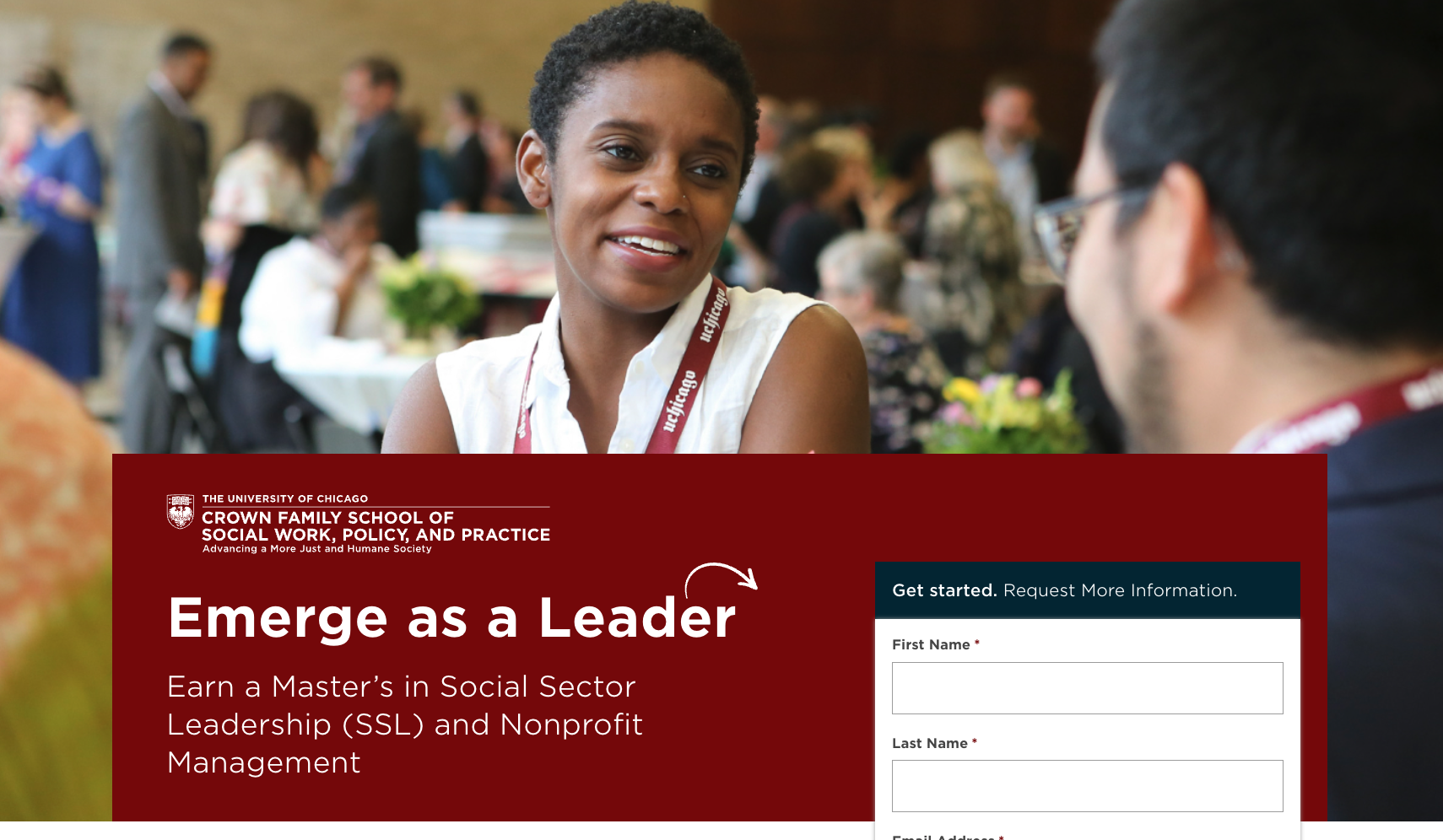
It’s Never Been Easier to Integrate Landing Pages Into Your Web Content Strategy

SUMMARY
Landing pages don’t need to be difficult or cost hefty subscription fees. In this post, we discuss the importance of landing pages in your web content strategy and how one university implemented landing pages on its website. We also cover why our solution allows for even more flexibility in the future.
Table of Contents
- How Do Landing Pages Work?
- Why Should You Use Landing Pages in Your Web Content Strategy?
- How Do You Make Landing Pages Work Better For You?
- How Does WordPress Fit In?
Learn How Your CMS Can Better Serve Your Specific Marketing Needs
Those of us who have dabbled in marketing for our organizations have heard about all those big-name landing page builders such as ClickFunnels, LeadPages, and Wix. Even email marketing tools like ConvertKit and ActiveCampaign let you build landing pages these days.
Many folks, including some of our clients, have turned to such platforms because they are easy to use. Anyone can hop into a tool like LeadPages and create a landing page without knowing a lick of code.
However, these tools often come with hefty subscription fees, and since they are just so customizable, there are few guardrails to ensure brand consistency. The good news is that whether you’re using Drupal or WordPress, there are ways to create landing pages directly in your current CMS.
How Do Landing Pages Work?
The philosophy behind a landing page is pretty simple: create a standalone page, make the content incredibly targeted, and get something in return. That targeted content has to be something valuable, worth enough for a user to directly engage with you.
Some good examples of landing page content can include:
- A free PDF containing information users may have trouble finding elsewhere
- Information about a service or program being offered
- Specific products or goods a user can purchase then and there as part of a discount promotion
The ultimate goal is that once someone arrives on your landing page, regardless of where they came from, they will become a lead you can nurture over time, which is why landing pages are a vital part of a web content strategy.
Why Should You Use Landing Pages in Your Web Content Strategy?
Now, I know what you’re thinking. “Syd! I could just link people directly to my website! Everything they could ever want to know is right there on XYZ page.”
To that, I say, put yourself in the user’s shoes.
You click on a link in a social media post, expecting to be able to get more information about XYZ. Instead, you get linked to a long, text-heavy page with more information than you need to know. There’s the main navigation, a sidebar of links, and maybe even a site alert at the very top of the page. You might decide to browse through additional pages, distracting you from your original goal. Perhaps you get overwhelmed with everything you’re looking at and decide to leave the website and return another day.
Landing pages allow you to create incredibly focused and targeted content. They typically have a reduced navigation so that users CAN browse to your main website, but the temptation isn’t as strong since there are fewer options. Landing pages can also be short, which means you get to choose the strongest content, such as testimonials and data points, to help the user in their decision-making.
How Do You Make Landing Pages Work Better For You?
The good news is that you CAN have your landing pages live inside your CMS, which gives you more control over your web content strategy than if you were using a third-party tool. You can ensure global styles are consistent with your brand. Your Google Analytics setup is already in place, which means your landing pages will be appropriately tracked for conversions and the like. If your organization uses tools like HotJar and Microsoft Clarity, those are guaranteed to work and continue tracking user behavior.
So how do you get there?
There’s a great example in the Crown Family School of Social Work, Policy, and Practice over at the University of Chicago. Last year, they came to us and shared that they were going to be running ads for one of their programs. The catch was that these ads would be run on the radio, so they needed a URL that was short and sweet to be read on air. Sure, we could have set them up with a redirect to the main program page and called it a day, but we wanted to ensure that we could track conversions for those radio ads.
They decided to invest time in their Drupal site and create a brand new Content Type specifically to make it easy for them to spin up new landing pages. These radio ads weren’t the only ones they’d be running, and their marketing team would find other ways to leverage the landing pages for other needs like upcoming events, professional development programs, and so on.

Some of the features they wanted to have on their landing pages included:
- Big, immersive photo
- Reduced navigation
- A form high up on the page
- Places to showcase student testimonials (written and video) and data points
- Links for secondary calls to action
We were able to give them everything they were looking for using structured fields on the Content Type in Drupal, but we did discuss enabling Layout Builder on the page to offer even more flexibility. This was de-prioritized as a requirement. However, our work made it so that if they ever decided they wanted to turn Layout Builder on, we could do so easily.
Best of all, the styles of all of these blocks are controlled in the code, so even though each page looks a little different, they all adhere to brand guidelines.
How Does WordPress Fit In?
Crown Family School uses Drupal as their CMS, but the philosophy behind the work we did applies to other CMSes like WordPress and Sitefinity, too. It’s possible to create a set of structured fields that output content cleanly and allow for the flexibility of a page builder underneath the structured elements.
Third-party page builders are great, but it’s worth noting that you can have a custom landing page solution that is on-brand, flexible, and affordable. If you’re interested in learning more about how we can make landing pages work for your web content strategy, reach out! We’d love to hear from you.



